Recomposing Museums: Designing Rhythmic Experiences for Short Attention Spans in the Digital Age
Thesis Project
In an era of rapid digital evolution, changes in how information is communicated and consumed have led to shorter attention spans. Traditional museums, which are rooted in continuous, linear storytelling, now face a need for adaptation. This thesis advocates for an innovative exhibition design approach tailored to the realities of shorter attention spans, proposing engagement and design strategies that introduce segmented narratives, diverse spatial configurations, sensory stimuli, and designated rest areas. By embracing a rhythmic experience, museums can combat “museum fatigue,” ultimately revitalizing their role as user-friendly cultural and educational institutions in the digital age.

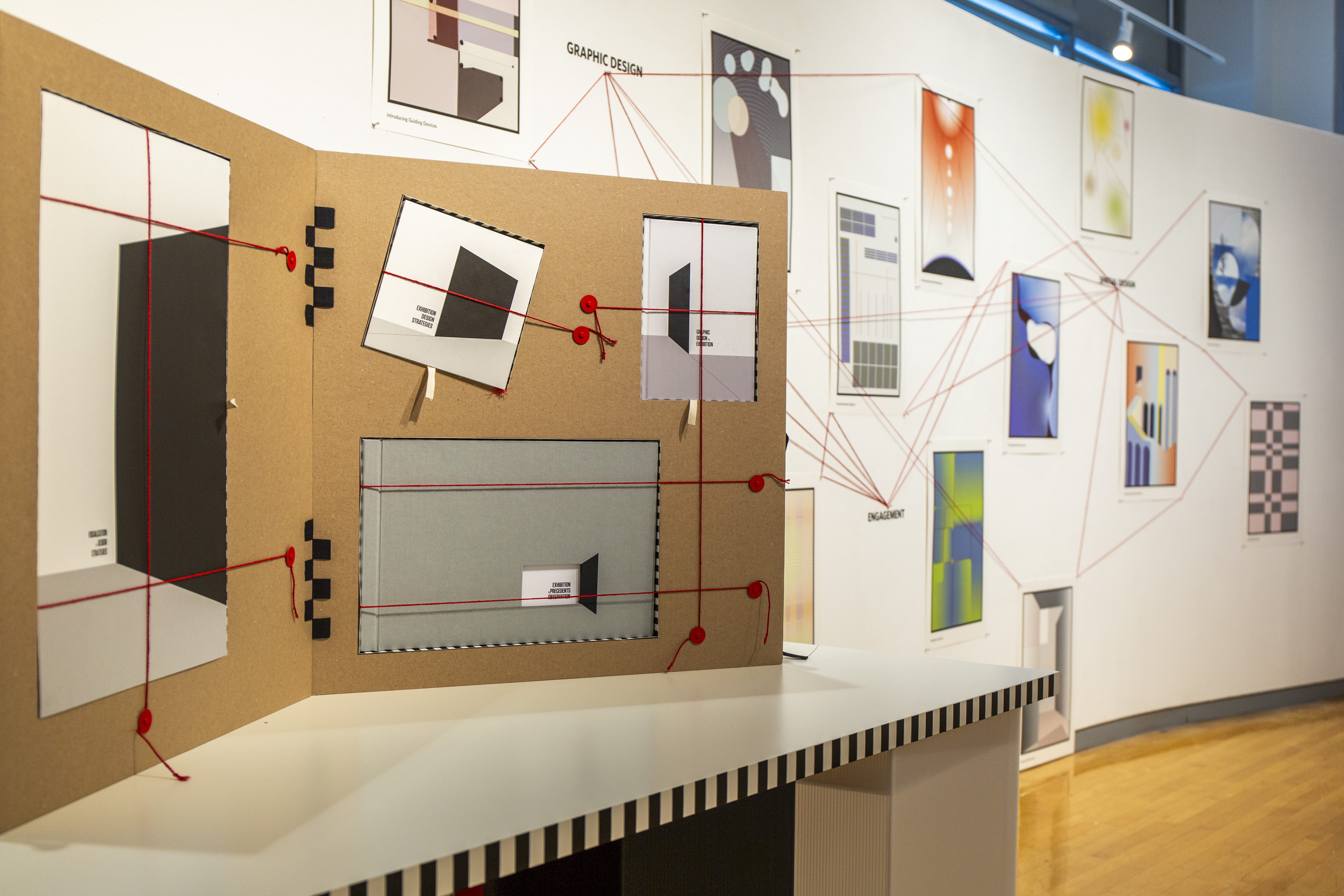



Approximating an exhibition experience, the thesis book adopts a non-linear, rhythmic, and segmented structure, comprising four interconnected yet distinct books that live within a single casing: an observational journal, a graphic design manual, a catalog of strategies, and a set of abstract visualizations.
Thesis Book
28 in × 28 in× 3.25 in
corrugated cardboard, paper, fabric, thread
28 in × 28 in× 3.25 in
corrugated cardboard, paper, fabric, thread




Exhibition Precedents and Observation
11 in × 17 in× 1.5 in
Paper, binder clip
This catalog of precedents, based on personal observation, explores exhibition design strategies from 30 exhibitions in Venice, focusing on Spatial Design, Materiality, Graphic Design, and Participatory Elements. Folding and pressing the front and back cover as the “arms” of a binder clip allows individual pages to be easily removed.
11 in × 17 in× 1.5 in
Paper, binder clip
This catalog of precedents, based on personal observation, explores exhibition design strategies from 30 exhibitions in Venice, focusing on Spatial Design, Materiality, Graphic Design, and Participatory Elements. Folding and pressing the front and back cover as the “arms” of a binder clip allows individual pages to be easily removed.
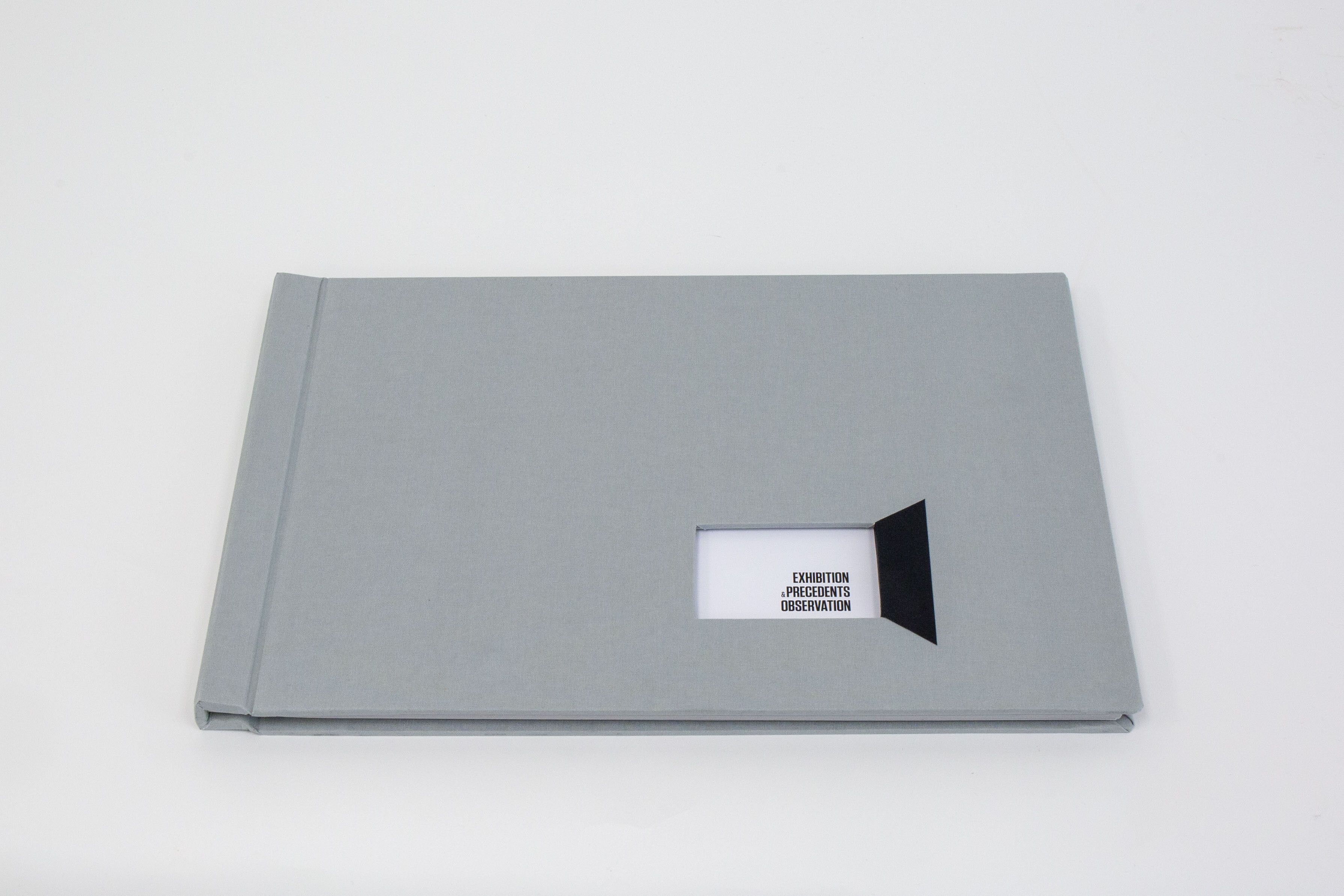
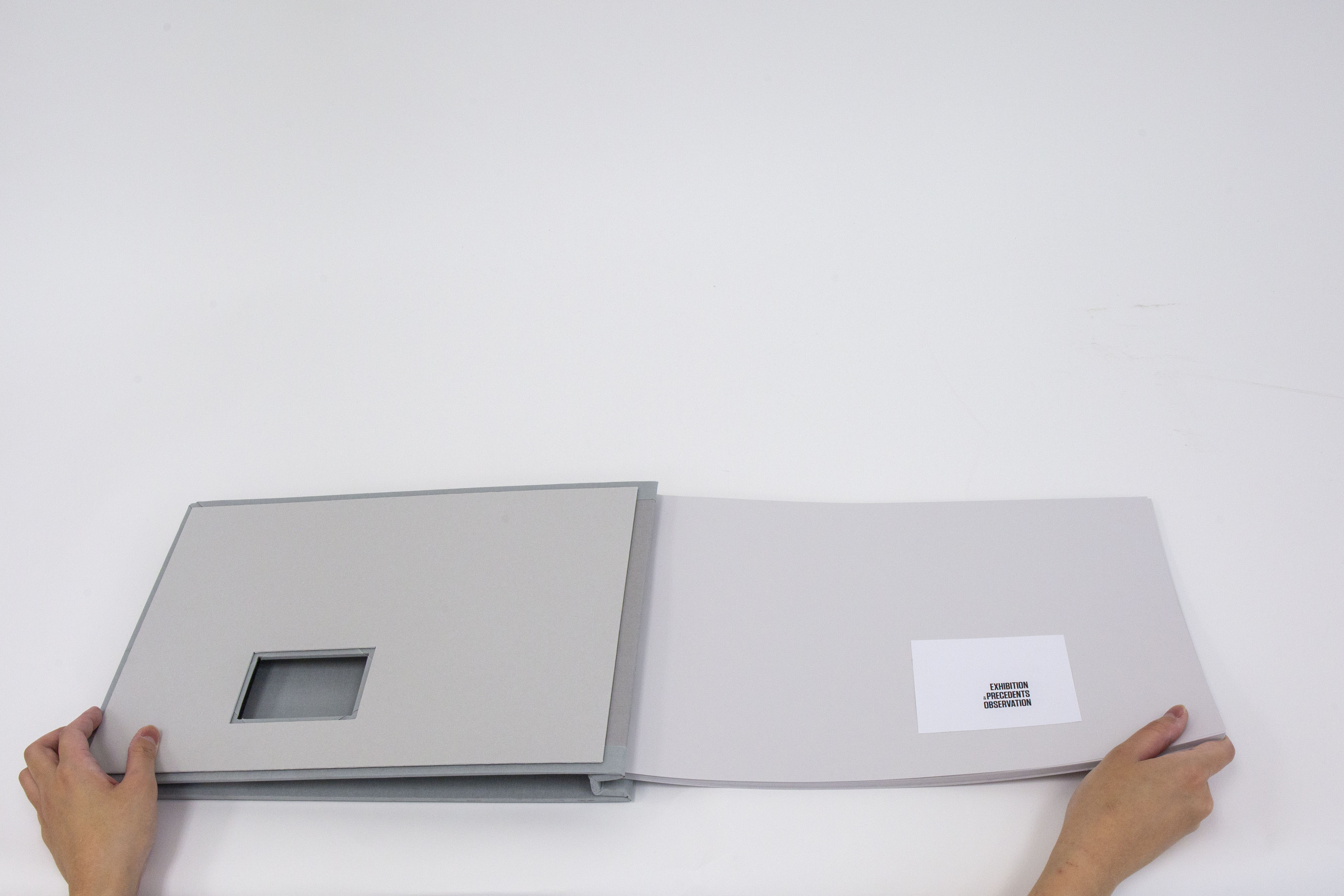

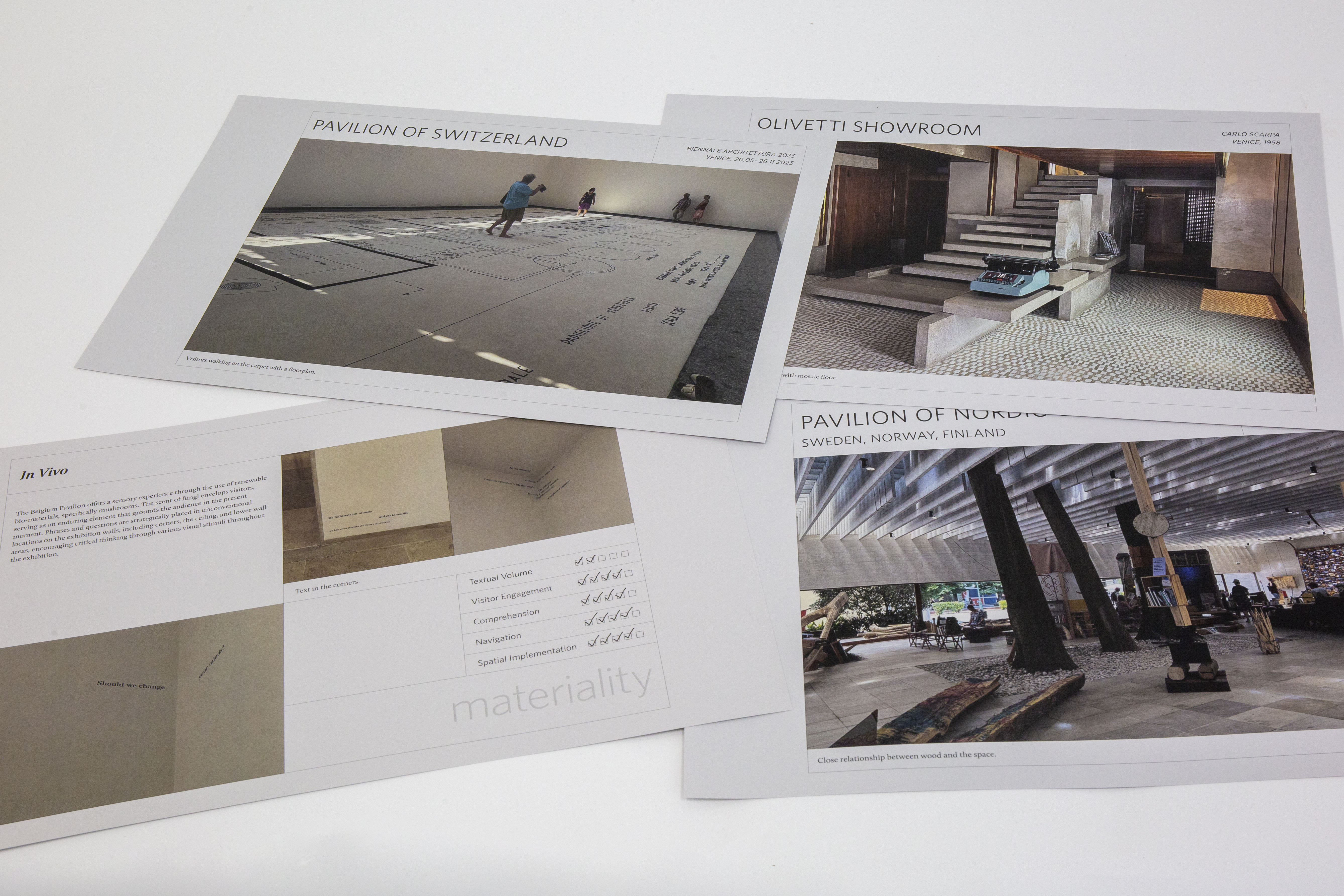


Graphic Design for Exhibition
7 in × 10 in × 1 in
paper
A graphic design manual about typography, color, fabrication, design process, and future challenges of graphic design for exhibitions, featuring personal insights, interviews, and precedents.
7 in × 10 in × 1 in
paper
A graphic design manual about typography, color, fabrication, design process, and future challenges of graphic design for exhibitions, featuring personal insights, interviews, and precedents.
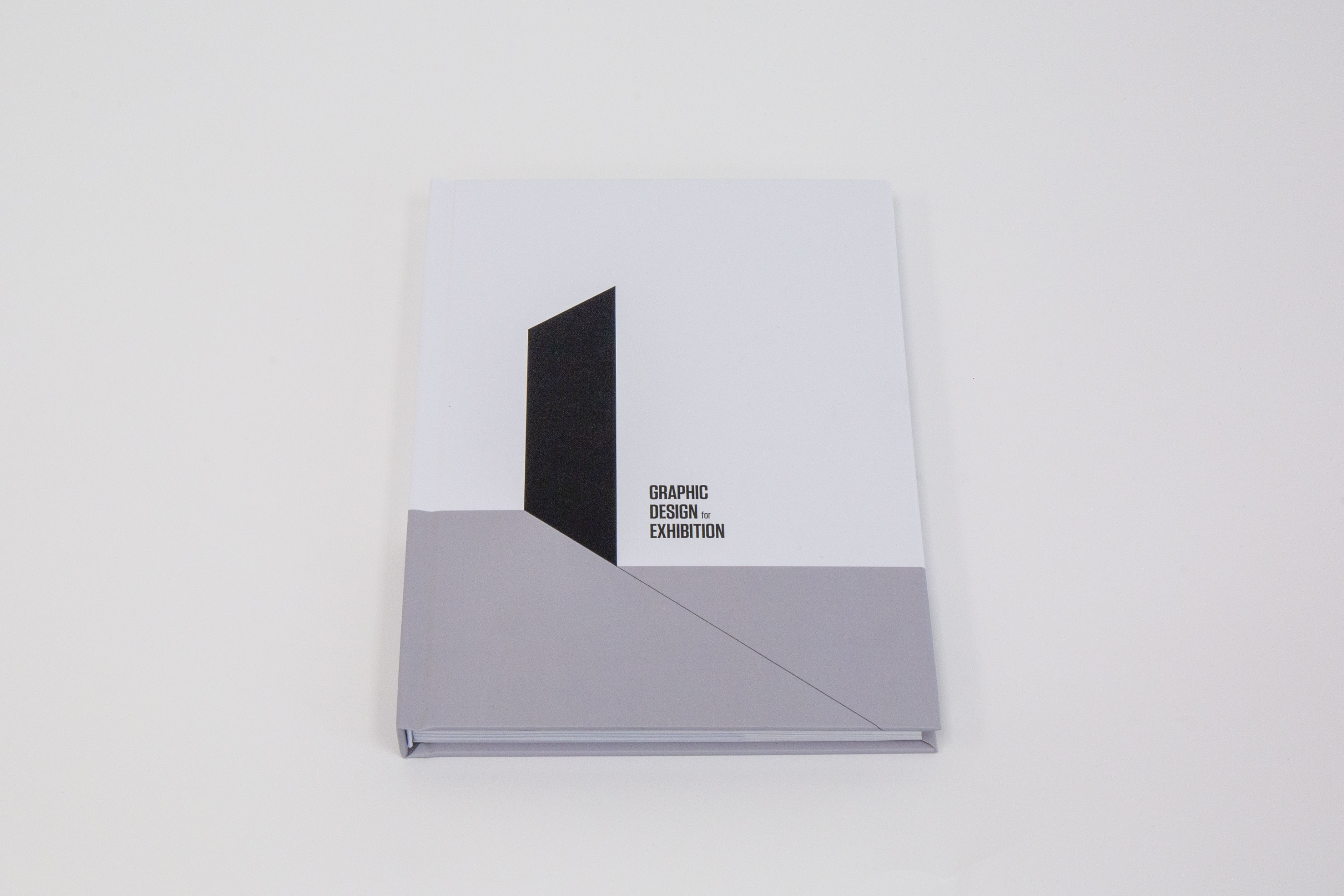




Exhibition Design Strategies
8 in × 8 in × 0.75 in
paper, thread
A catalog of 12 exhibition design strategies exploring methods to combat 'museum fatigue' by introducing segmented narratives, diverse spatial configurations, sensory stimuli, designated rest areas, and engagement programs. The book features text, abstract visualizations, and diagrammatic drawings on various colored vellum papers, stitched with red thread.
8 in × 8 in × 0.75 in
paper, thread
A catalog of 12 exhibition design strategies exploring methods to combat 'museum fatigue' by introducing segmented narratives, diverse spatial configurations, sensory stimuli, designated rest areas, and engagement programs. The book features text, abstract visualizations, and diagrammatic drawings on various colored vellum papers, stitched with red thread.






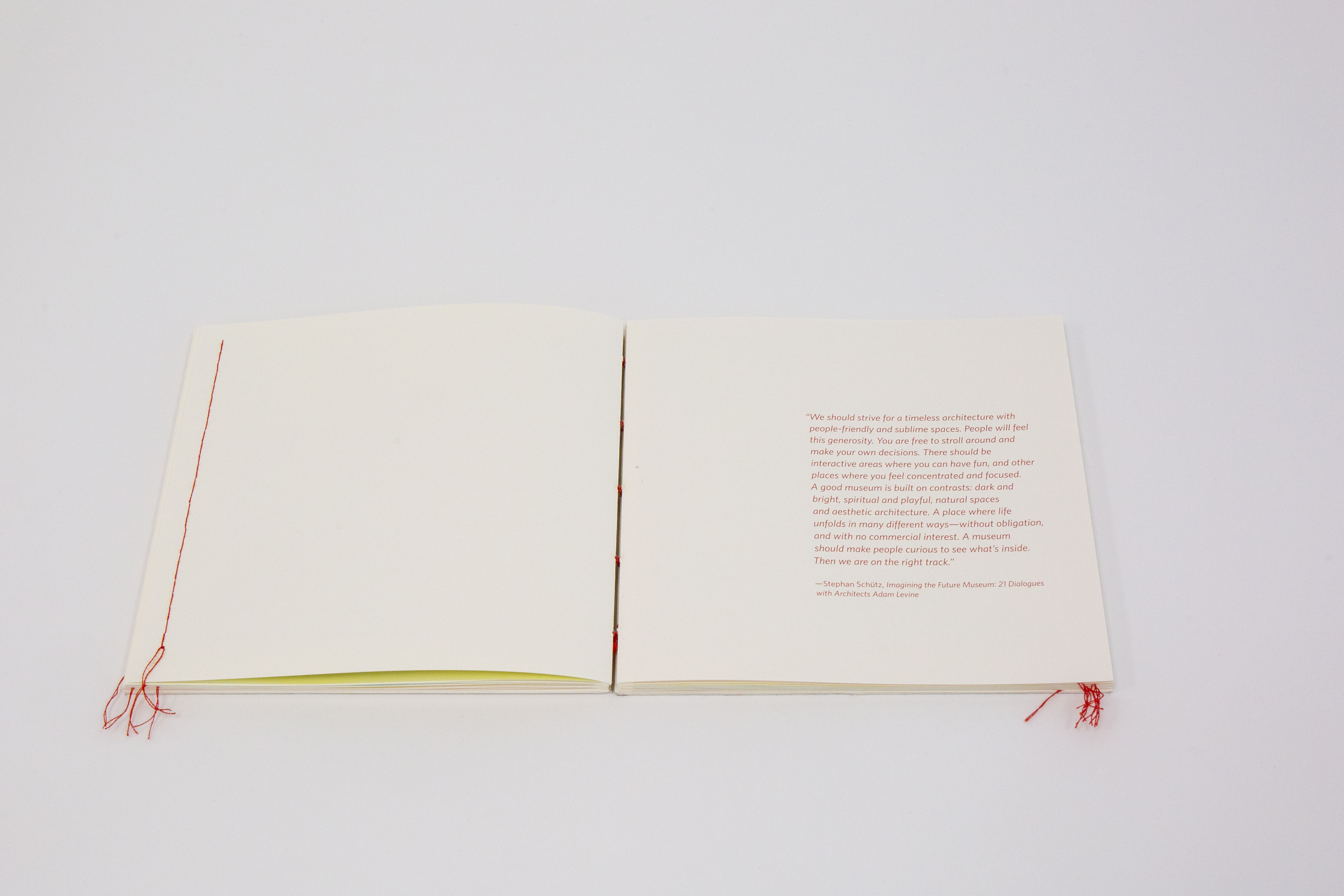
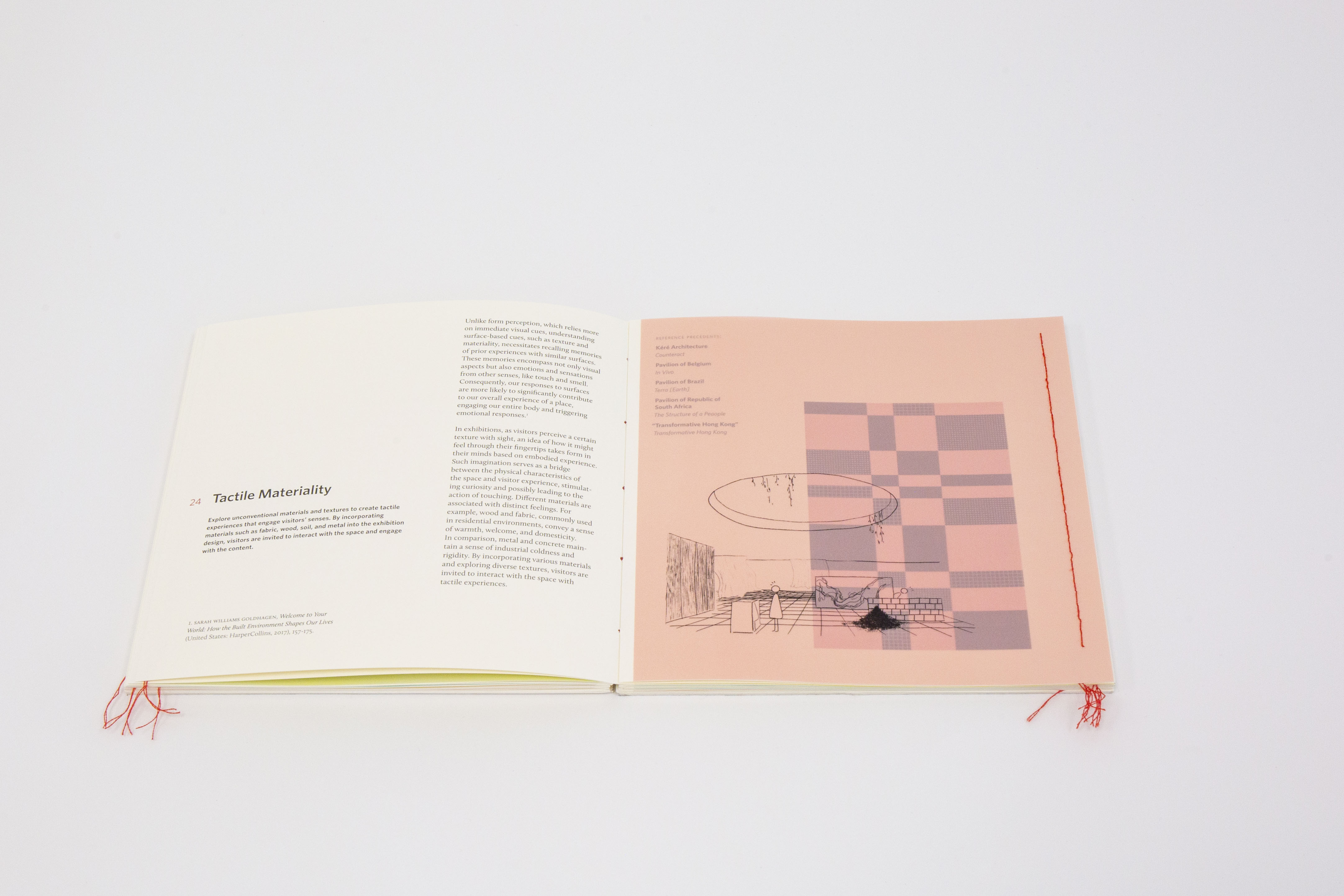
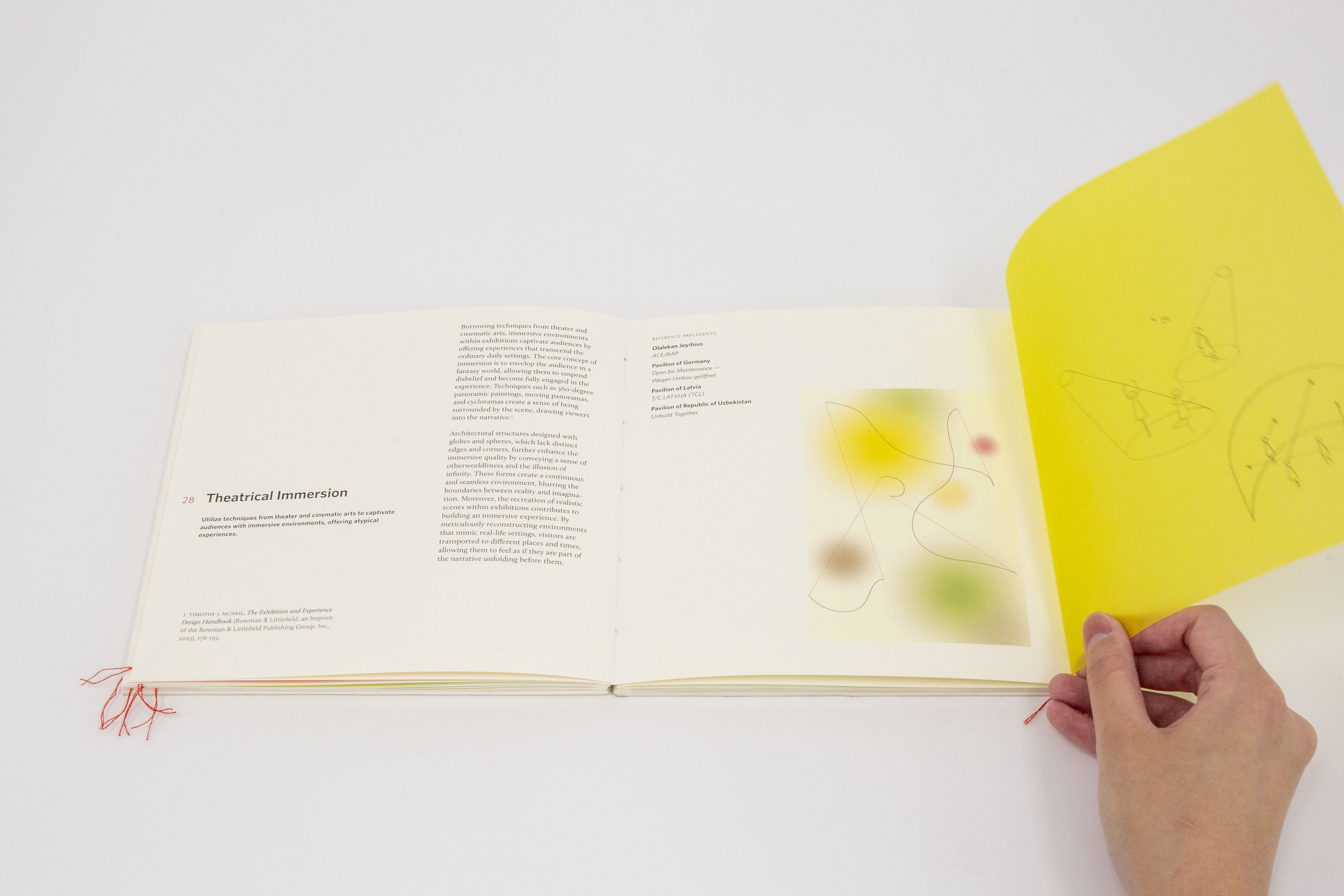

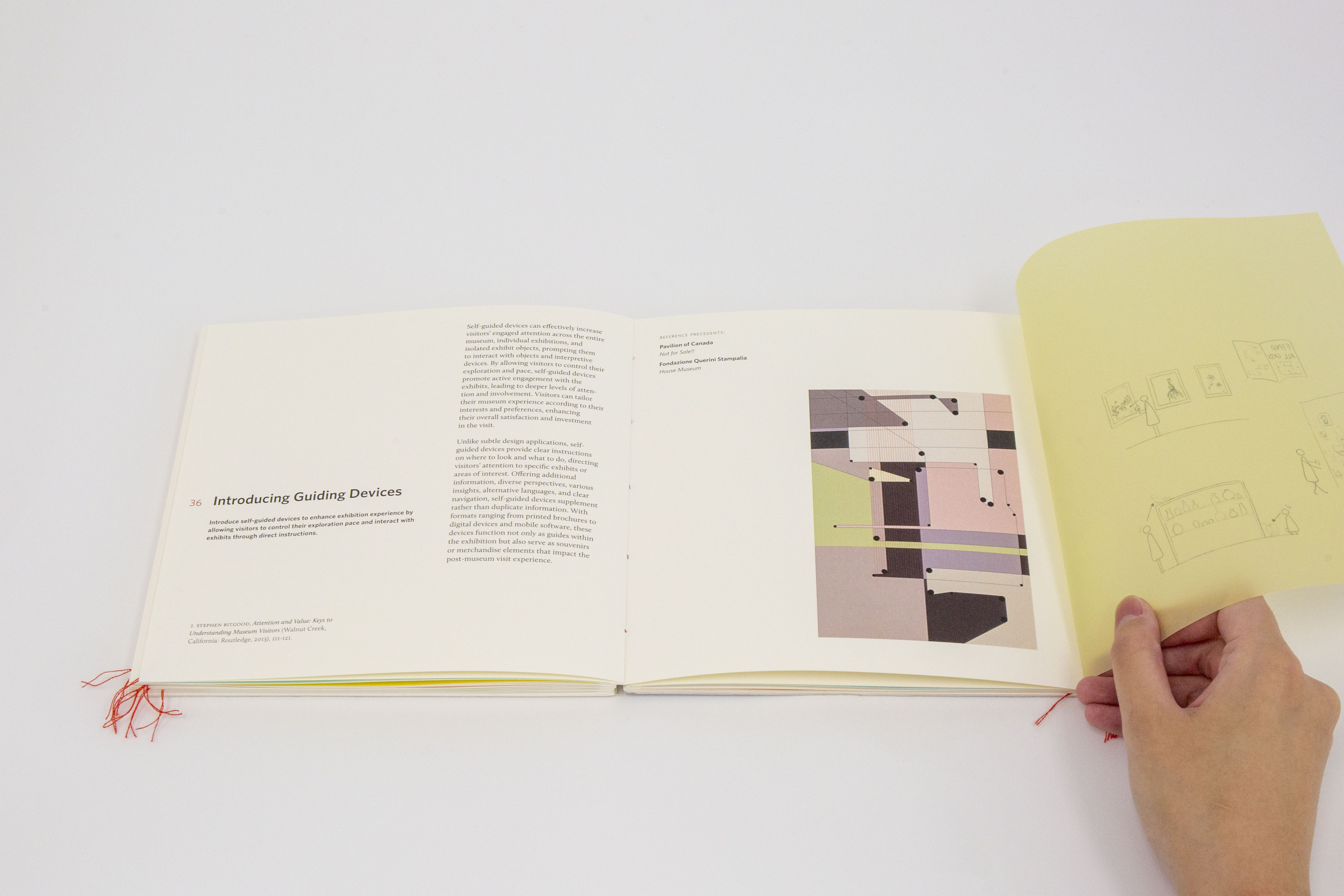


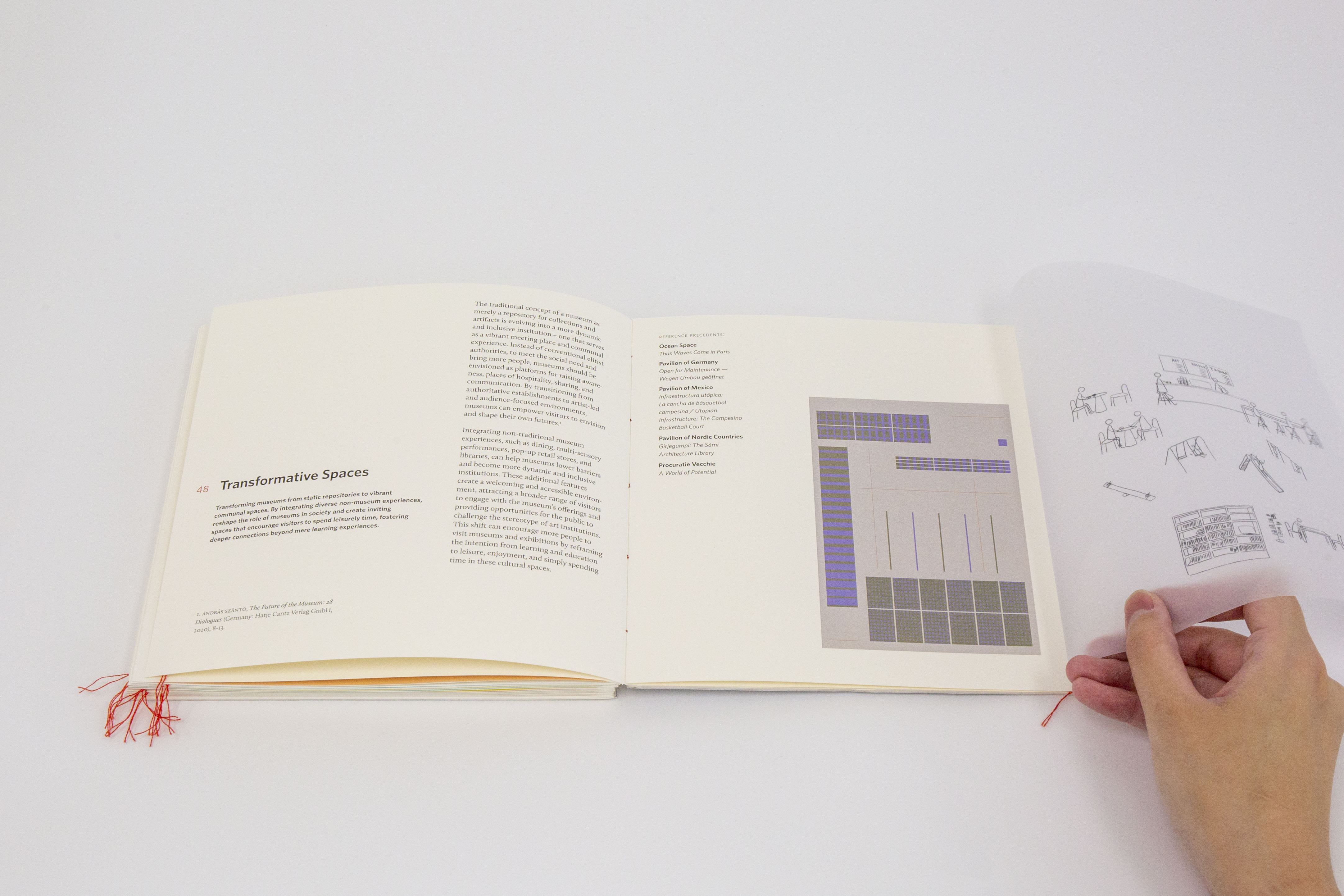
Visualization of Design Strategies
15 in × 22 in × 0.5 in
paper, magnet
A set of abstract visualizations of exhibition design strategies, contained in a paper folder secured with magnets.
15 in × 22 in × 0.5 in
paper, magnet
A set of abstract visualizations of exhibition design strategies, contained in a paper folder secured with magnets.

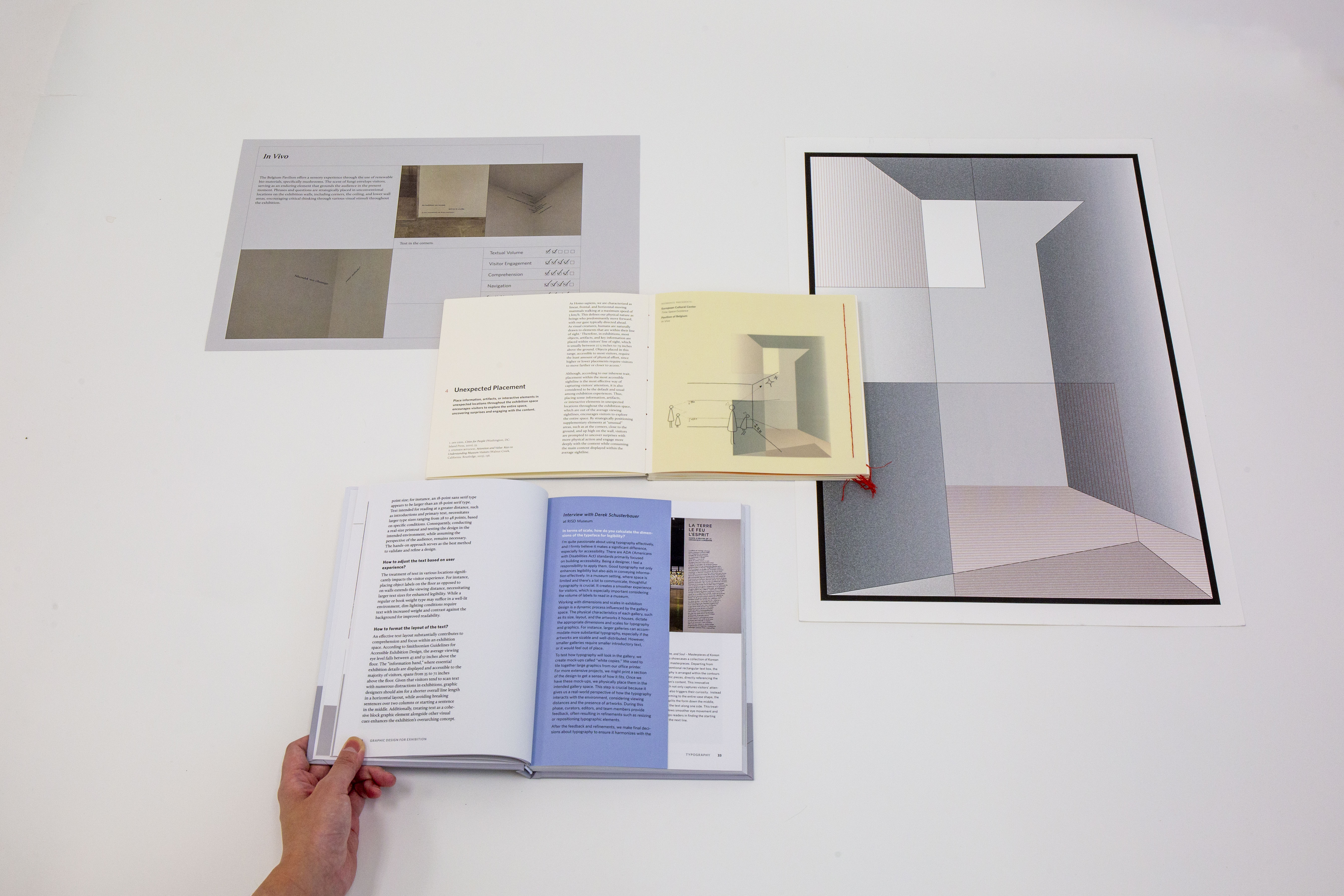
Examples from each book showing how they are thematically connected with each other.
Exhibition Design Strategies:
- Unexpected Placement
- Conceptualize with Abstraction
- Incorporate Nature
- Access through Daily Settings
- Designated Spatial Elements
- Introducing Guiding Devices
- Theatrical Immersion
- Rhythmic Sections
- Tactile Materiality
- Activating Relaxation Zones
- Engaging Programs
- Transformative Spaces
